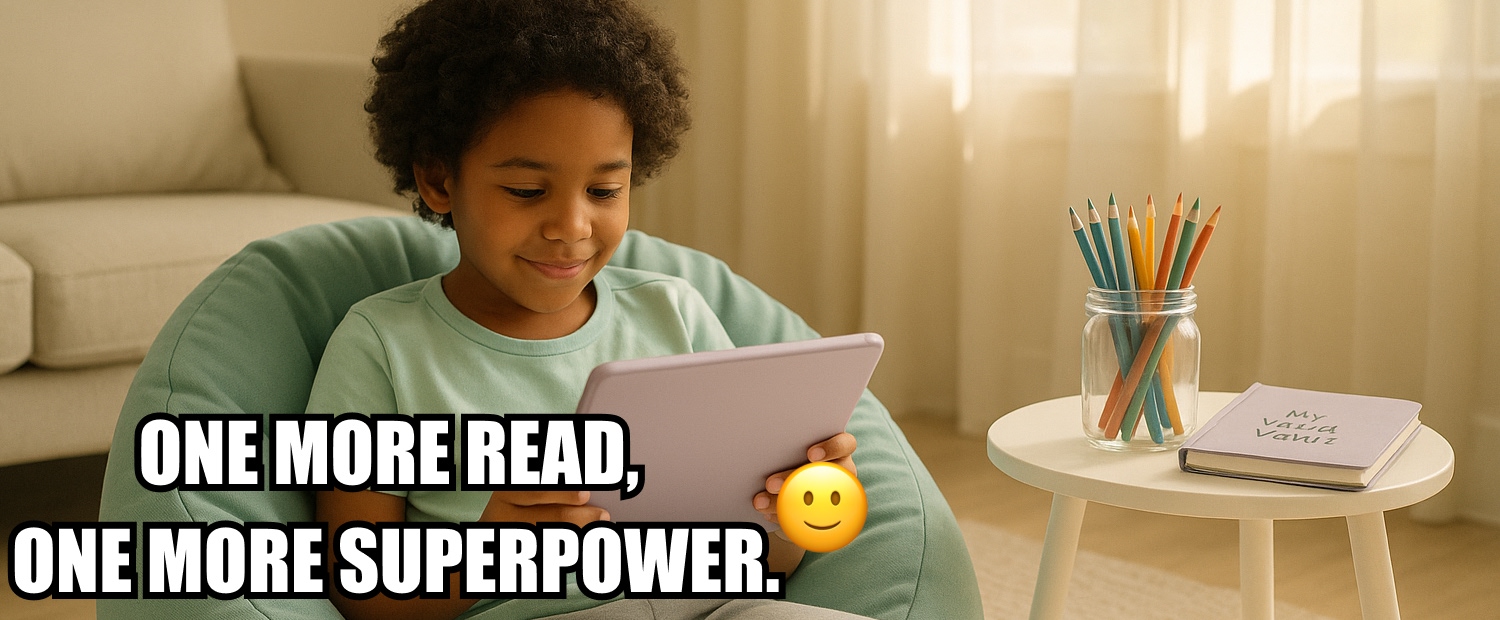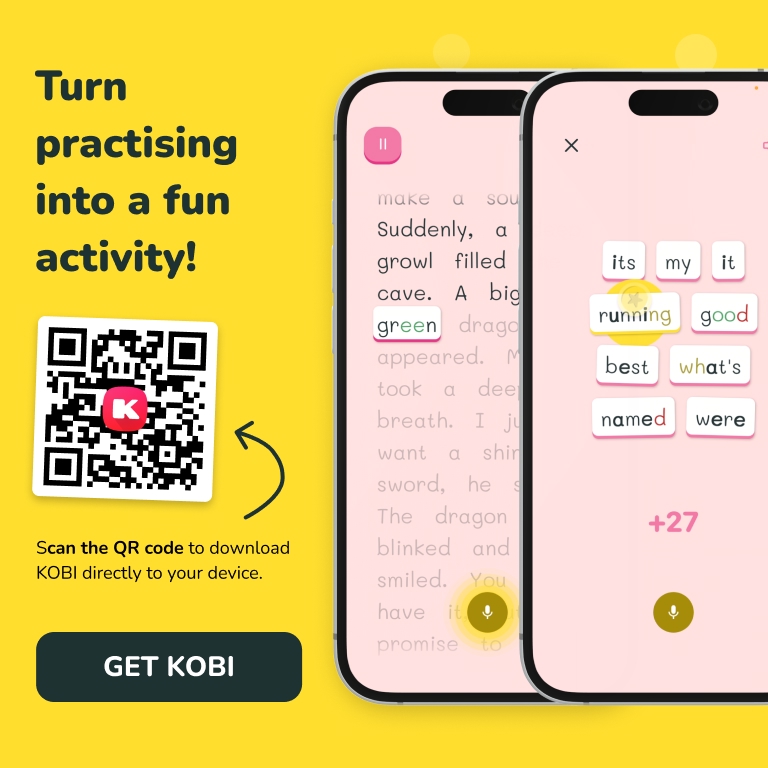Summary: What You’ll Learn in This Article
- Why repetition is key to reading fluency and memory
- How the Science of Reading explains repeated exposure
- How KOBI’s features like WordBlaster, Snap-a-Story, and Pictionary support repetition
- Ways to make repeated reading fun and frustration-free
- Simple routines to boost your child’s confidence with every read
Why Repetition Works Wonders
If it feels like your child needs to read the same word or story again (and again!), you’re not doing anything wrong. In fact, you’re doing something exactly right.
Repetition isn’t boring, it’s brain-building. Every reread strengthens the pathways that connect sounds, words, and meanings. Over time, decoding becomes smoother, comprehension deeper and confidence stronger.

The Science Behind the Re-Read
According to the Science of Reading:
- Fluency improves with repeated exposure to the same text (Tilanus et al., 2016)
- Vocabulary retention increases through repeated, meaningful use (Ehri, 2005)
- Set-for-variability strengthens when tricky words appear in different contexts (Steacy et al., 2019)
In short: repetition helps the brain move from effortful decoding to automatic recognition – a critical step toward fluent reading.

How KOBI Makes Repetition Natural (and Fun)
Step 1: Start in Story Shaker or Explore KOBI’s Library
Use Story Shaker (Snap-a-Story) to create a personalized story from a photo, or explore KOBI’s library to pick a familiar favorite. First, tap ‘Listen & Read‘ to hear fluent modeling, then switch to ‘Read Aloud‘ for your child’s turn.

Step 2: Play WordBlaster After Reading
WordBlaster automatically pulls words from your child’s session and reinforces them through a fast-paced, game-like format. It’s repetition disguised as play!
Step 3: Tap Pictionary for Visual + Audio Boosts
Tricky words get paired with images and friendly definitions, helping lock in both meaning and memory. These words stay in WordVault for easy review later.
Step 4: Build a Routine of Review
Schedule 2–3 short re-reads per week – either revisiting Snap-a-Story texts or practicing WordVault words. With each reread, fluency and confidence grow.
Step 5: Celebrate the Familiar
When your child instantly recognizes a word or breezes through a reread, cheer them on! Visible success motivates kids to keep going.
ThinkTalk: Talk It Out After Reading
Once your child finishes a reread, open ThinkTalk to spark a quick conversation about the story. They’ll answer playful, guided questions while KOBI listens and encourages, helping them reflect on what they’ve read and build confidence through comprehension.
Bonus Feature: Science-Backed Progress Summaries
Every session ends with KOBI’s progress report and WordVault, showing exactly how repetition is paying off.
Research proves it:
- Orthographic mapping (Ehri, 2005) turns repeated exposure into ‘sight words’ stored for instant recall.
- Visible feedback loops build confidence – kids see their wins, parents see their growth.
With KOBI, repetition isn’t guesswork. It’s measurable progress you can celebrate.
Tips for Parents: Make Repetition Feel Rewarding
- Repeat on their terms: Let them choose the story.
- Turn it into a challenge: “Can you read it smoother this time?”
- Use WordVault as a memory bank: Revisit mastered words and favorite visuals.
- Keep sessions short and sweet: Repetition works best in small bursts.
- Draw it out: Have them illustrate a Snap-a-Story text they love – it reinforces meaning creatively.

Why Homeschoolers Love the Power of Repetition
- Builds mastery through joyful review
- Supports reading across skill levels
- Uses smart tech to avoid ‘drill-and-kill’ fatigue
- Blends learning with curiosity and creativity
Reading Practice Doesn’t Have to Be a Struggle
Fluency doesn’t come from one read – it grows word by word, reread by reread.
With KOBI, repetition becomes part of the adventure. Snap it. Read it. Play it again. Watch your child’s confidence bloom with every session.


